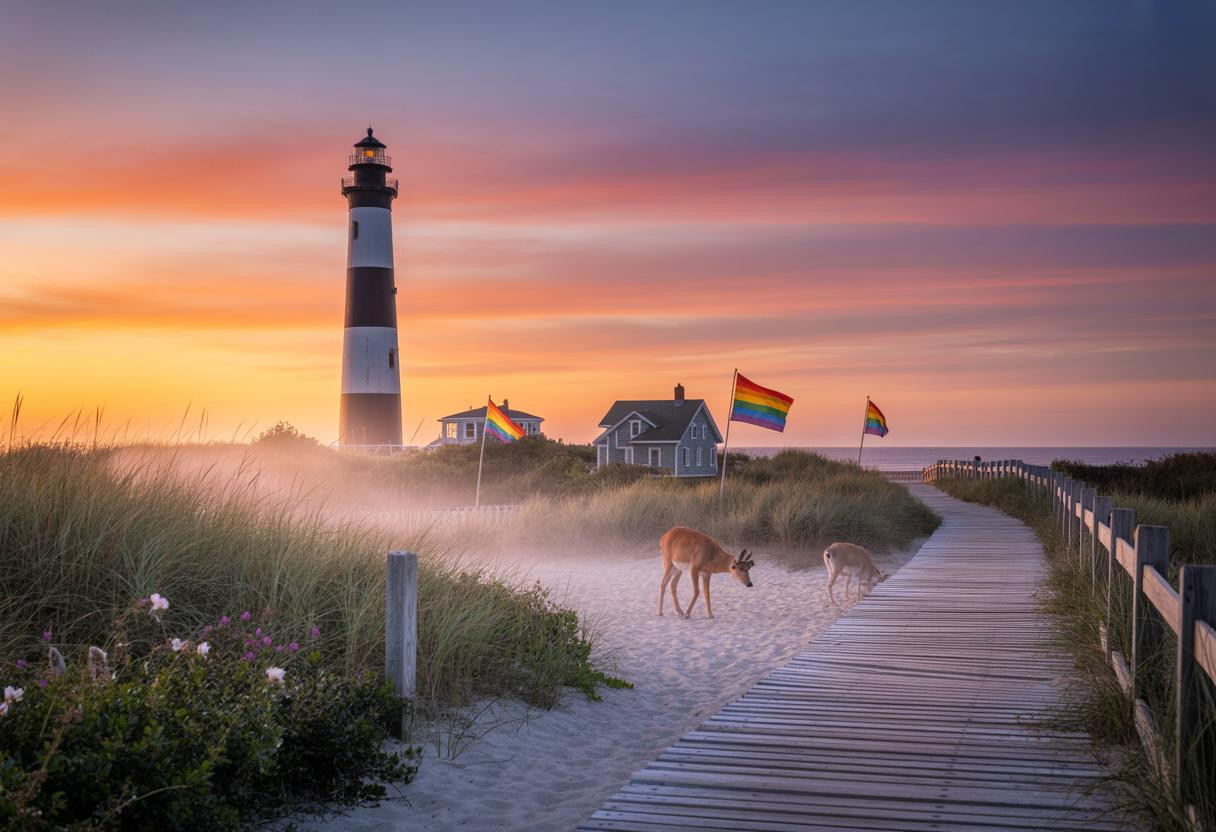Fire Island stands as a breathtaking barrier isle just off Long Island’s southern shore, where pristine beaches meet vibrant LGBTQ+ communities and historic landmarks. This car-free paradise stretches for 31 miles, offering visitors a unique escape where wooden boardwalks replace roads and the iconic lighthouse stands as a sentinel over the Atlantic. In recent years, Fire Island has cemented its reputation as both a natural haven and cultural landmark, drawing record numbers of visitors seeking its distinctive blend of natural beauty and inclusive community.
A sanctuary of sand and pride
The communities of Cherry Grove and Fire Island Pines have served as LGBTQ+ havens for nearly a century, long before mainstream acceptance. These vibrant hamlets represent some of America’s first openly gay communities, providing safe spaces when few existed elsewhere.
“Fire Island isn’t just a destination—it’s a living testament to LGBTQ+ resilience,” explains Dr. Maya Winters, LGBTQ+ historian. “The beaches between Cherry Grove and the Pines have witnessed generations of queer joy and freedom that couldn’t exist on the mainland.” The LGBTQ+ Communities on Fire Island continue to thrive, hosting legendary events like the annual Pines Party.
The lighthouse that guided generations
Standing tall at 168 feet, the Fire Island Lighthouse has been guiding mariners since 1858. This black-and-white striped tower offers more than just spectacular views—it represents a crucial piece of maritime history.
“For many immigrants arriving in America, this lighthouse was their first glimpse of the promise of a new life,” notes John Remsen of the Fire Island Lighthouse Preservation Society. “Today, it symbolizes both navigation and illumination—guiding visitors physically and metaphorically toward acceptance.”
Nature’s delicate balance
The Fire Island National Seashore protects this fragile ecosystem like a protective parent guards a child. Established in 1964, it preserves:
- Seven miles of pristine wilderness
- Rare maritime forests and dune systems
- Critical habitat for endangered species
- Cultural landmarks dating back centuries
Life without cars: The wooden walkway network
Like veins running through a living organism, Fire Island’s wooden boardwalks connect its communities. Residents pull red wagons loaded with groceries, creating a charming scene reminiscent of simpler times. This car-free environment has become increasingly precious in our fossil-fuel dependent world.
Facing nature’s challenges head-on
As climate change intensifies, Fire Island faces existential threats from rising seas and stronger storms. Conservation Efforts on Fire Island include:
- Community-funded dune restoration programs
- Beach grass planting initiatives
- Innovative erosion control measures
Beyond the lighthouse: Robert Moses State Park
Robert Moses State Park anchors Fire Island’s western end like a welcoming handshake, offering family-friendly beaches and recreational facilities. Its contrast with the island’s more secluded areas demonstrates Fire Island’s remarkable diversity.
What makes Fire Island unlike anywhere else?
Fire Island is like a perfectly balanced cocktail—equal parts natural wonder, cultural sanctuary, and historic treasure. Where else can you find pristine wilderness adjacent to vibrant communities where drag queens parade freely down boardwalks past deer grazing in front yards?
“There’s a magic to Fire Island that stays with you,” shares longtime summer resident Emma Chen. “The moment your feet hit those wooden walkways, everyday stresses dissolve into the salt air.”
Ready to experience this barrier isle for yourself? Whether seeking natural beauty, LGBTQ+ community, or simply an escape from the mainland’s chaos, Fire Island awaits—lighthouse beacon shining, wooden walkways stretching, and communities welcoming all who appreciate its singular charm.
